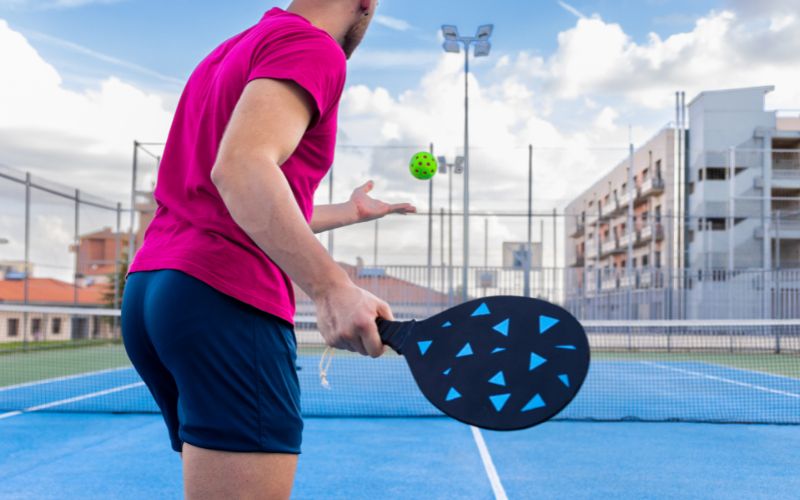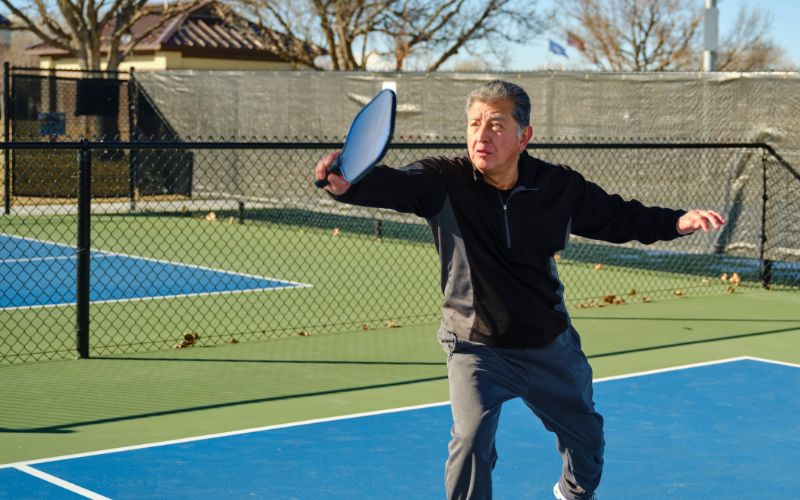Pickleball has surged in popularity over recent years, captivating players of all ages with its blend of tennis, badminton, and table tennis elements. Central to mastering the game is understanding how to hold a pickleball paddle properly. Your grip can significantly impact your control, power, and finesse on the court. In this comprehensive guide, we’ll delve into various pickleball grips, techniques, and tips to help you optimize your gameplay.
Understanding Pickleball Grips
What is a Pickleball Grip?
Before delving into specific grip styles, it’s essential to understand the importance of the pickleball paddle grip. The grip serves as your connection to the paddle, influencing how you maneuver and strike the ball during play.
Importance of Proper Grip
A good grip not only enhances your ability to control the ball but also minimizes the risk of injury and fatigue during extended matches. Whether you’re a beginner or an advanced player, refining your grip technique is crucial for honing your skills on the court.
Exploring Pickleball Grip Styles
Continental Grip
The continental grip is a fundamental grip style widely used in pickleball. To achieve this grip, place your hand on the paddle handle so that the V-shape between your thumb and index finger aligns with the third bevel of the paddle. This grip is favored for its versatility, allowing players to execute both forehand and backhand shots with ease.
Eastern Grip
The eastern grip involves positioning your hand slightly further to the right (for right-handed players) compared to the continental grip. The V-shape of your hand aligns with the second bevel of the paddle. This grip is particularly effective for generating power on forehand shots.
Western Grip
Contrary to the eastern grip, the western grip requires placing your hand even further to the right, aligning with the first bevel of the paddle. While less common in pickleball, some players, especially those transitioning from tennis, may find the western grip advantageous for hitting topspin shots.
Perfecting Your Pickleball Paddle Grip
Neutral Position
Before gripping the paddle, ensure your hand is in a relaxed, neutral position. Avoid excessive tension in your fingers and wrist, as this can hinder fluid movement and control during gameplay.
Grip Pressure
Maintaining the right grip pressure is crucial for optimal performance. Avoid gripping the paddle too tightly, as this can restrict movement and lead to fatigue. Instead, aim for a firm yet relaxed grip that allows for quick adjustments and maneuverability.
Finger Placement
Pay attention to the placement of your fingers on the paddle handle. The index finger plays a pivotal role in guiding the direction of your shots. Position it comfortably along the paddle’s surface, maintaining a stable yet flexible grip.
Paddle Face Orientation
When gripping the paddle, ensure the face is perpendicular to the ground. This alignment enables precise ball contact and minimizes the risk of mishits or errant shots during gameplay.
Mastering Grip Techniques
Practice and Repetition
Like any skill in pickleball, mastering your grip technique requires consistent practice and repetition. Dedicate time to drills and exercises specifically designed to improve your grip strength, flexibility, and control.
Experimentation and Adaptation
Don’t be afraid to experiment with different grip styles and techniques to find what works best for your playing style. As you gain experience, you may discover subtle adjustments that enhance your performance on the court.
Seek Expert Guidance
For advanced players looking to fine-tune their grip technique, seeking guidance from experienced coaches or instructors can provide invaluable insights and feedback. Additionally, online resources, such as instructional videos and tutorials on platforms like YouTube, offer a wealth of information on proper grip techniques and gameplay strategies.
Avoiding Common Pitfalls
Bad Habits and Overcompensation
Be mindful of developing bad habits or overcompensating for deficiencies in your grip technique. Addressing these issues early on can prevent long-term problems and facilitate smoother gameplay in the long run.
Quick Exchanges and Adaptability
In fast-paced pickleball matches, the ability to quickly switch grips and adapt to changing game dynamics is essential. Practice switching between grips seamlessly to maintain control and momentum during rallies.
Conclusion
Mastering the art of holding a pickleball paddle is a fundamental aspect of excelling in the game. By understanding different grip styles, practicing proper techniques, and remaining adaptable on the court, you can enhance your control, power, and precision in every shot. Whether you’re a seasoned player or just starting, investing time and effort into refining your grip can elevate your pickleball game to new heights. With dedication and perseverance, you’ll unlock the full potential of your paddle and enjoy countless hours of exhilarating gameplay on the pickleball court.
FAQs:
1. What is the significance of holding a pickleball paddle properly?
Holding a pickleball paddle correctly impacts your control, power, and finesse on the court, enhancing your overall gameplay experience.
2. What are the different pickleball grip styles?
Pickleball grip styles include the continental grip, eastern grip, and western grip, each offering unique advantages for executing shots with precision and power.
3. How important is grip pressure in pickleball?
Maintaining the right grip pressure is crucial for optimal performance. Avoid gripping the paddle too tightly to prevent fatigue and ensure fluid movement during gameplay.
4. How can I improve my pickleball paddle grip technique?
Focus on maintaining a relaxed, neutral hand position, experimenting with finger placement, and ensuring the paddle face is perpendicular to the ground for precise ball contact.
5. What strategies can help me avoid common pitfalls in pickleball grip technique?
Be mindful of developing bad habits, seek expert guidance for fine-tuning your technique, and practice quick grip exchanges to adapt to fast-paced game dynamics effectively.




